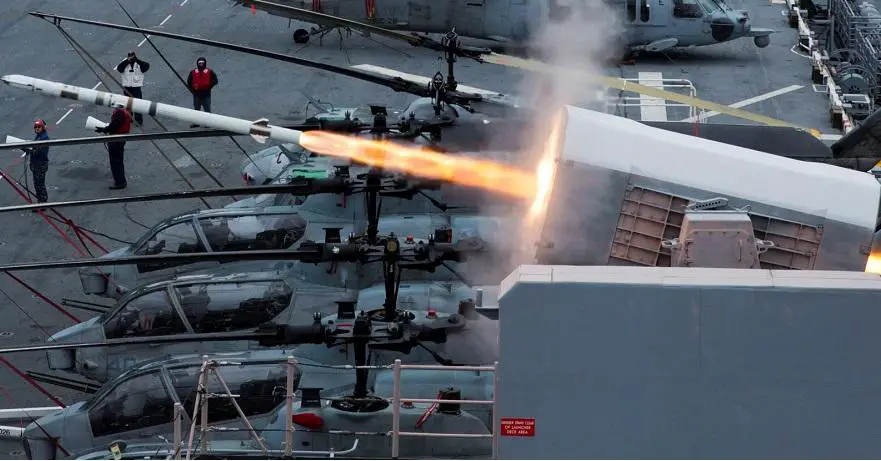The Budget Committee of the German federal parliament’s budget committee has authorised the procurement of 600 RIM-116 Rolling Airframe Missile (RAM) Block 2B quick reaction surface-to-air guided missiles for the German Navy (Deutsche Marine). The RIM-116C RAM Block 2 is an evolution of the RIM-116B RAM Block 1 missile, featuring a larger rocket motor, advanced control section, and an enhanced RF receiver able to detect quiet threat emitters. The improvements make the missile two-and-a-half times more manoeuvrable, with a range one-and-a-half times longer than its predecessors. Block 2A modifications introduced software upgrades to the missile guidance section to enable multitarget processing.
The RAM anti-ship missile defence system is a co-operative programme between the German and US governments, with Raytheon Missile Systems and the RAM-System (RAMSys) consortium of Diehl and MBDA Deutschland in Germany acting as prime contractors and co-operating partners. All new German Navy warships will be equipped with the RAM, which will mount two RAM launchers per ship. In a 22 September announcement, the German Ministry of Defence (MoD) said that the 600 missiles will be delivered between 2024 and 2029 under a contract worth EUR560 million (USD542 million). The acquisition includes additional contracts worth a total of EUR76.1 million to ensure the Block 2B systems are ready for supply and to extend the production of the LFK RAM Block 2 missile until it is replaced.

The RIM-116 Rolling Airframe Missile (RAM) is a small, lightweight, infrared homing surface-to-air missile in use by the German, Japanese, Greek, Turkish, South Korean, Saudi Arabian, Egyptian, Mexican, UAE and US Navies. It was intended originally and used primarily as a point-defense weapon against anti-ship missiles. As its name indicates, RAM rolls as it flies. The missile must roll during flight because the RF tracking system uses a two-antenna interferometer that can measure phase interference of the electromagnetic wave in one plane only. The rolling interferometer permits the antennas to look at all planes of incoming energy. In addition, because the missile rolls, only one pair of steering canards is required.
The RAM Block 2 is an upgraded version of the RAM missile aimed at more effectively countering more maneuverable antiship missiles through a four-axis independent control actuator system, increased rocket motor capability, an improved passive radio frequency seeker and upgraded components of the infrared seeker, and advanced kinematics. On 8 May 2007, the US Navy awarded Raytheon Missile Systems a $105 million development contract; development was expected to be completed by December 2010. On 22 October 2012, the RAM Block 2 completed its third guided test vehicle flight, firing two missiles in a salvo and directly hitting the target, to verify the system’s command and control capabilities, kinematic performance, guidance system, and airframe capabilities.











